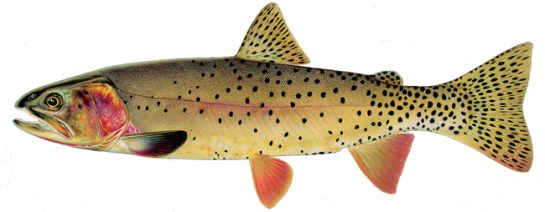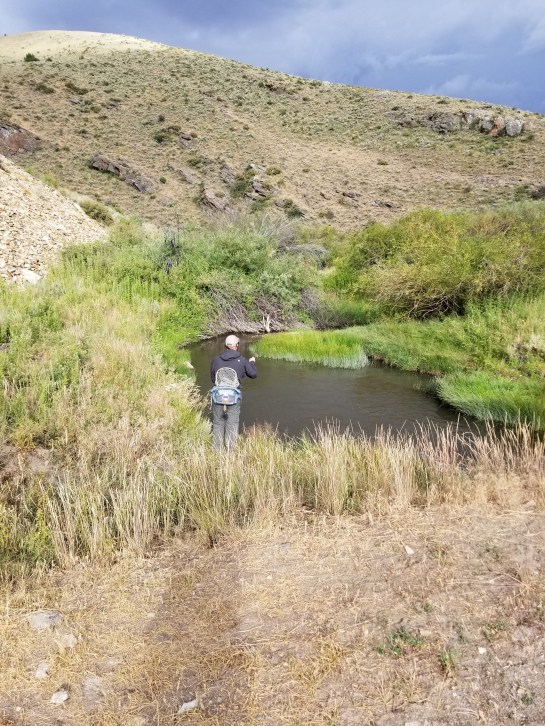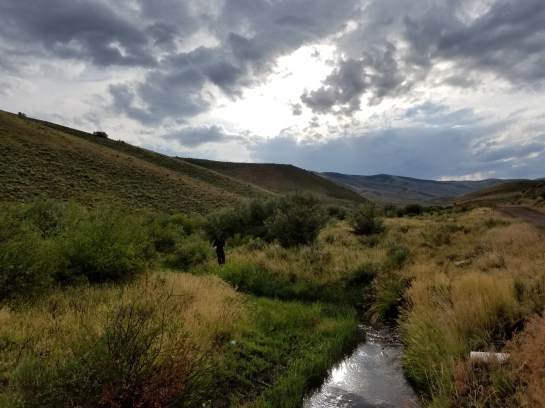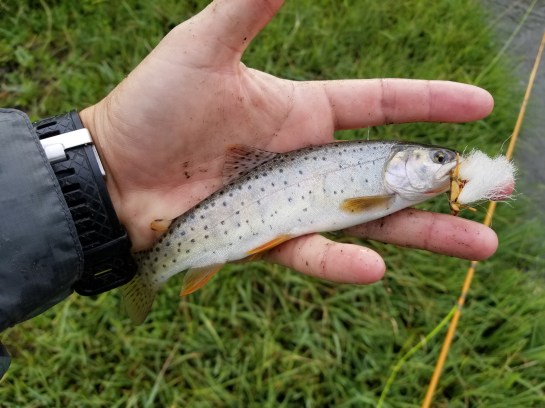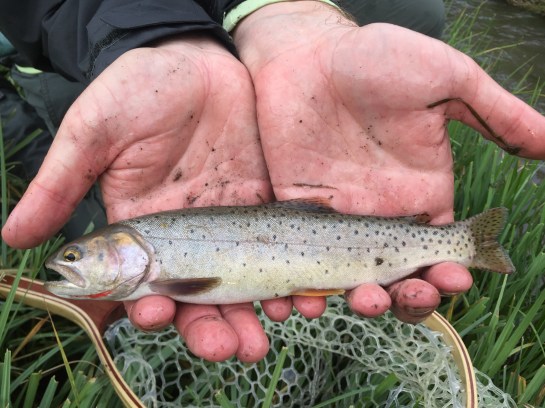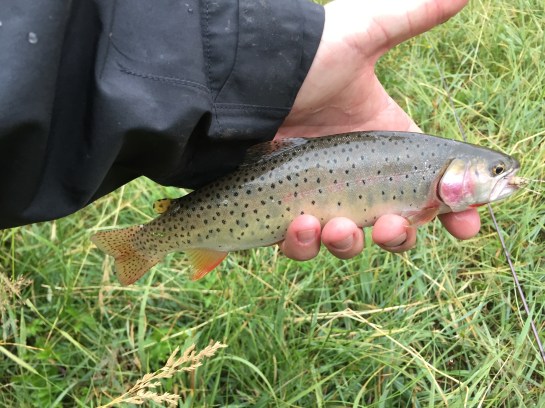The first night of hammock sleeping on a week long camping trip is always tough so as soon as I saw twilight the next morning I was up and at ’em. A short, chilly walk to the bathroom began to reveal the beauty of the Raft River Mountains and the valley we were in. We had arrived in the dark so I didn’t know what to expect, but this campground had some of the best views out of any that we stayed in. The remoteness of it was pretty awesome. If you’re interested in heading to NW Utah to camp, Clear Creek Campground is the only campground option in the Raft River Mountains and it is free to stay there.


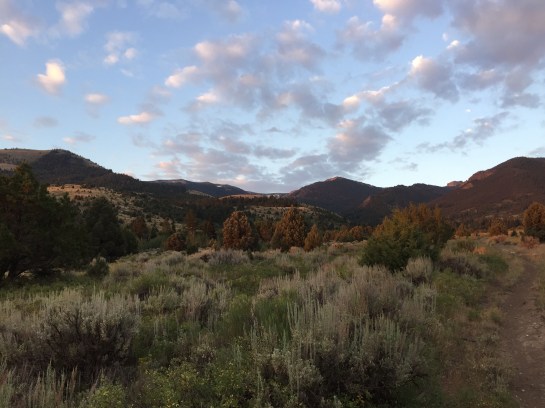

Shortly after my walk we packed up and hit the road. After a brief drive through Idaho the next stop was the Logan Canyon where we would be targeting Bear River cutthroat.

The Bear River cutthroat is not actually a formally described species. Federally the cutthroat in the Bear River system (including Bear Lake and the Logan River) are considered Bonneville cutthroat trout. Obviously the state of Utah thinks otherwise so I had to do some reading to learn what makes these cutthroat unique. It has been pointed out by scholars, most notably Dr. Robert Behnke, that the cutthroat in the Bear River system actually are more closely related to Yellowstone cutthroat trout due to a Bonneville Basin high water diversion between the Bear and Snake River drainages some 34,000 years ago. If you want to learn more about native trout and native cutthroat I can suggest two books for you. Trout and Salmon of North America by Dr. Robert Behnke and Cutthroat: Native Trout of the West by Patrick Trotter are absolute must-owns for any fish nerd. They make great coffee table books as well.
We started our fishing on a Logan River tributary where we parked at a trailhead and planned on fishing up from there. I got ready a little quicker than Blake so I made my way over to the creek to check it out and as soon as I did I saw a cutthroat holding next to the bank. One float of a dry fly in front of him and my second cutthroat species of the slam was checked off the list.

Then I caught another one.
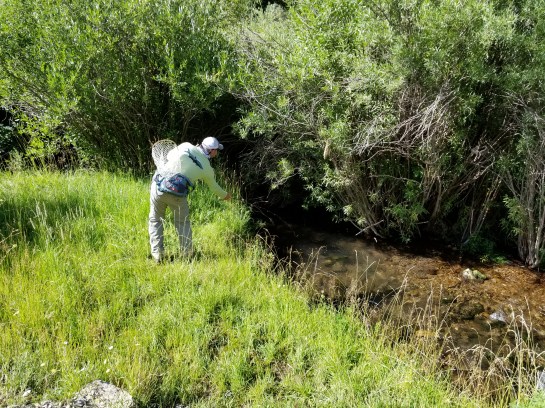


And Blake caught one of his own.

Now that the pressure was off we were ready to spend the rest of the day looking for bigger ones. The stream was pretty tight in some places and had lots of overhanging vegetation – great fish habitat, but kind of tough to fish. In other places it was more open and easier on the fly rods, especially where there were beaver ponds and slower water. There was lots of variation throughout which made for a pretty interesting little creek. I feel like the size of the cutthroat we caught was pretty good for the size of the water, it was a great stream for our 3 and 4 weight glass rods.

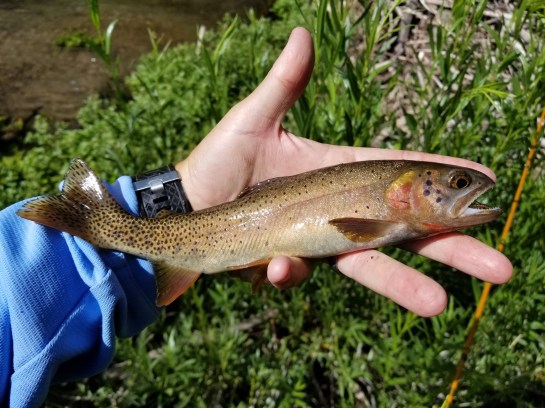

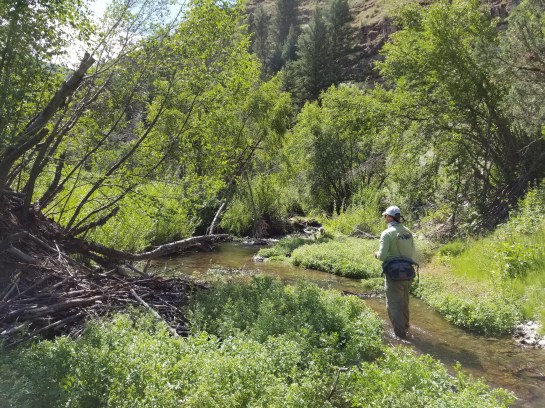




We had covered maybe 3/4 mile of stream and caught several nice fish before another group of three anglers passed by on the trail and dropped in at a trail intersection just upstream of us. We had one more fish in us on this stream before we broke for lunch and Blake made his fish count. It was the biggest on the day so far and a great way to end that session.

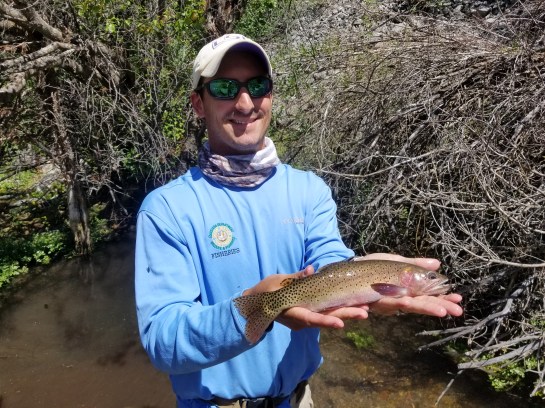

We hiked out and set out to find a suitable campsite for the night. Sleeping in hammocks requires sturdy trees to hold us so sometimes finding a good campsite can take a little extra time than with a tent. There are numerous campgrounds in Logan Canyon though and despite them starting to fill up for the weekend we found one without too much hassle at Wood Camp. We set up camp, had lunch and then hit the water again.


We fished a section of the Logan that ran away from the road a bit just upstream from the campsite. It was big water compared to what we were used to and the wading was pretty difficult mainly due to the depth and volume of water moving through. We weren’t getting many strikes and then finally I get a good take on my dry. I can feel the weight of a solid fish, I know it’s a good fish because I can feel each deliberate head shake. Then just as quickly as I was hooked up here comes the fly back at me. I pulled it from his mouth. I’m guessing it was a big brown since the Logan is known for them, but I don’t really know. I do know that it would have been a good fish, best of the trip for me. After that we decided to move a bit further upstream, hopefully find some safer wading.
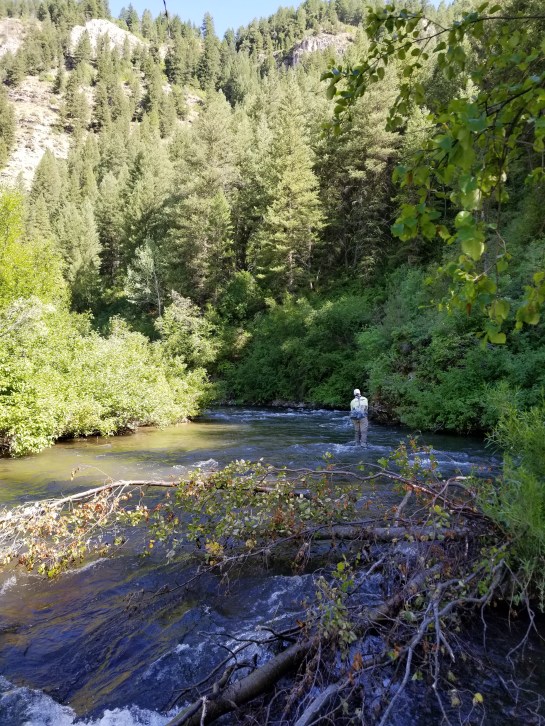

I’ve heard the legendary Madison River in Montana is called the 50 mile riffle and I had read that the Logan was like a mini-Madison, from what I was seeing this was holding true. The river was dominated by riffles and runs.

I was throwing a dry-dropper with a stimulator up top and a green caddis pupa style nymph below and at some point I began holding my mouth right and hit a fish-catching rhythm. I had 6-7 cutthroat in a row fishing the different seams and holding water.



I caught my biggest cutthroat on the day in that stretch.

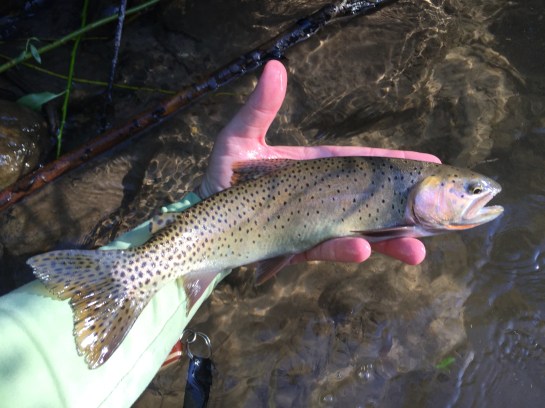
I even had a few browns come up and slam the dry.



Blake didn’t fare as well, it was one of those rare times when I out-fished him, but he did come away with a solid cutty from the Logan.

Things slowed down for me after that productive stretch of water, more of a return to normal really. It was starting to get dark out and we were starting to get hungry so we hit the road back to the campsite. It was nice already having the hammocks set up, so all we had to was make a fire and cook dinner.

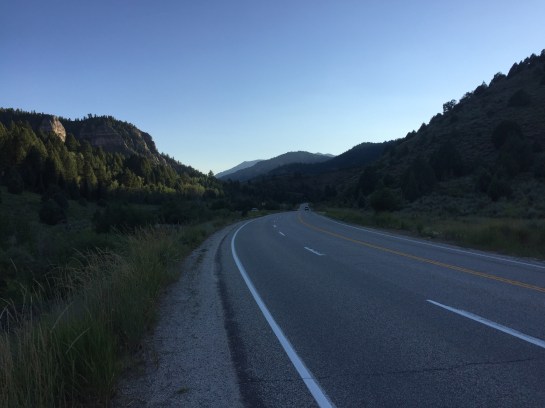
We generally eat pretty cheap on these trips, just boiling water and eating dehydrated meals, but tonight was different. We actually bought a couple of ribeyes and some potato salad and ate pretty good that night.
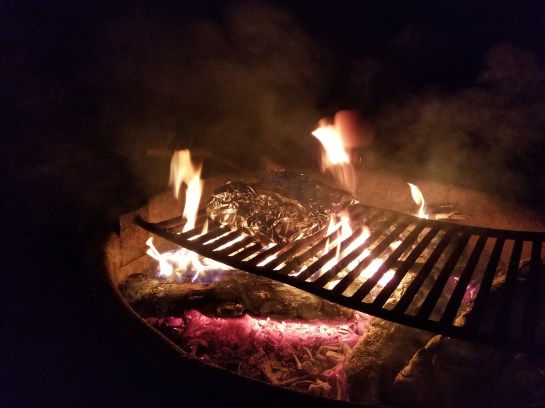

For Day 3 we’d fish another Logan trib and then hit the road to hit the North Slope of the Uintas. The next cutthroat on our list was the Colorado River cutthroat.
